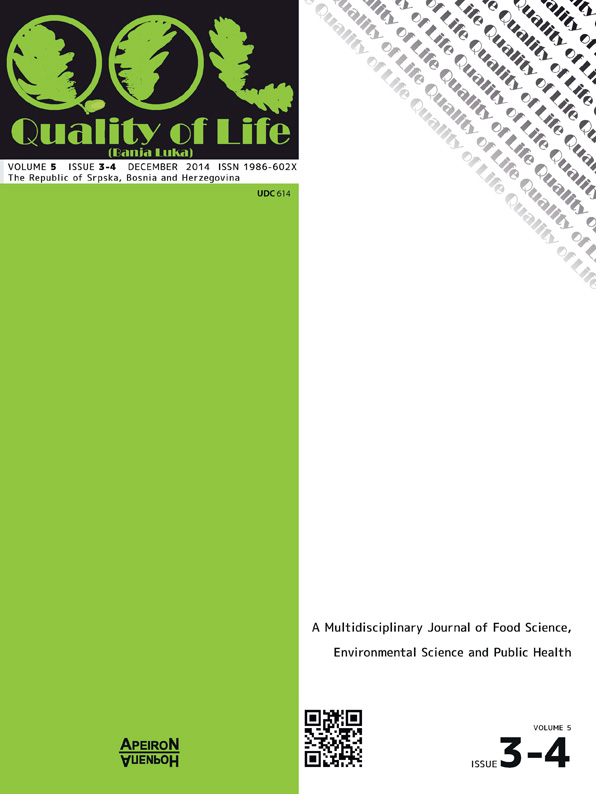Non-Isothermal Degradation of Vitamin C by Simultaneous Thermogravimetric and Differential Thermal Analysis
DOI:
https://doi.org/10.7251/QOL1402098JAbstract
The non-isothermal degradation process of Vitamin C (Galenika, Serbia) was investigated by simultaneous thermogravimetric and differential thermal analysis (TG-DTA), in the temperature range from an ambient one up to 650°C. The scope of presented work is toward stability of active pharmaceutical substance – ascorbic acid and calculation of all relevants kinetics parameters: activation energy (Ea), pre-exponential factor (A) and half-time (t1/2) for stability assesment in explored formulation. It was established that the degradation proceeds through five degradation stages (designated as I, II, III, IV and V), which involve: the dehydration, the melting of ascorbic acid, as well as the decomposition of excipients present: microcrystalline cellulose, D-glucose, carboxymethylcellulose, magnesium stearate , lactose and corn starch. During thermal degradation, all excipients increase their thermal stability and some kind of solid-solid and/or solid-gas interaction occur. The kinetic parameters and reaction mechanism was determined for the II stage, where decomposition of ascorbic acid happened using powerfull kinetic software KINETICS05. Two approaches were used: isoconversional and modell fitting method. It was concluded that degradation of ascorbic acid is best described with N-th order model with Ea= 139.550kJ/mol, A= 1.9689∙1013s-1 and n=1.2132.Downloads
Published
2014-12-20
Issue
Section
Чланци
